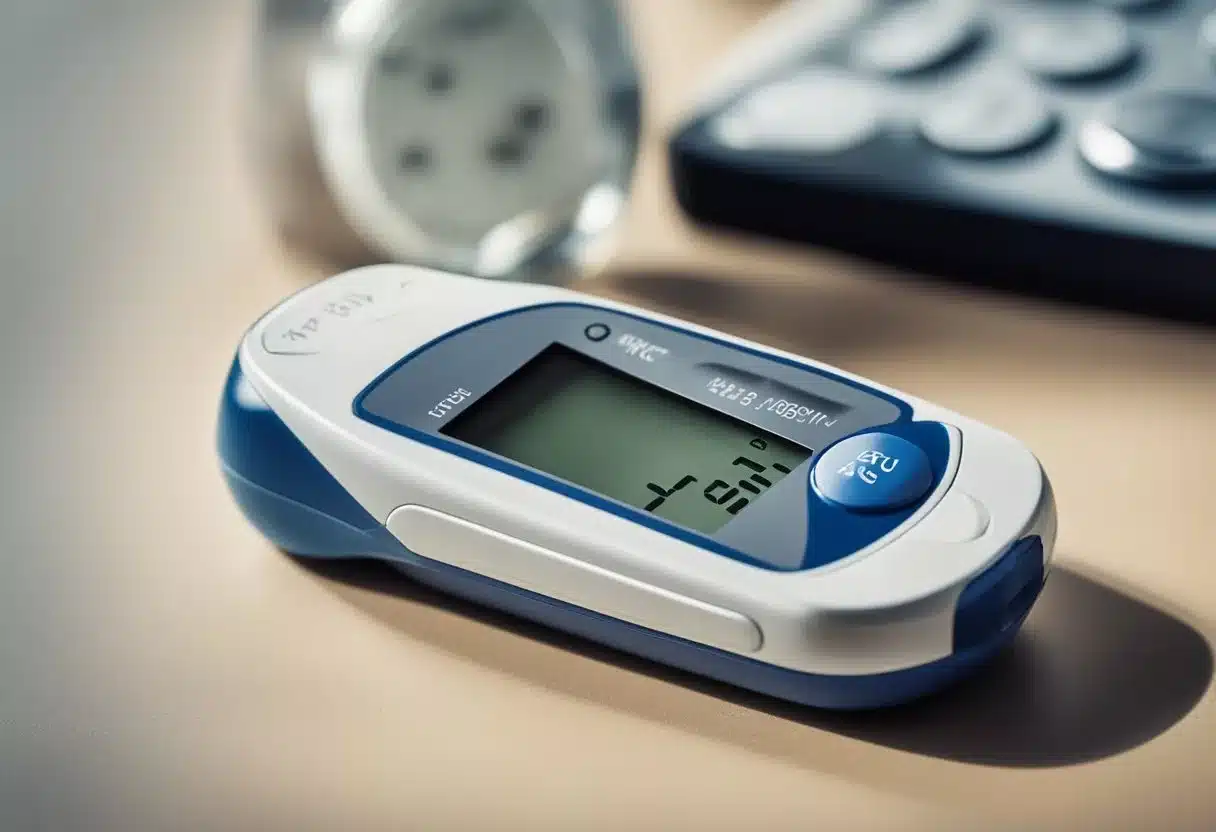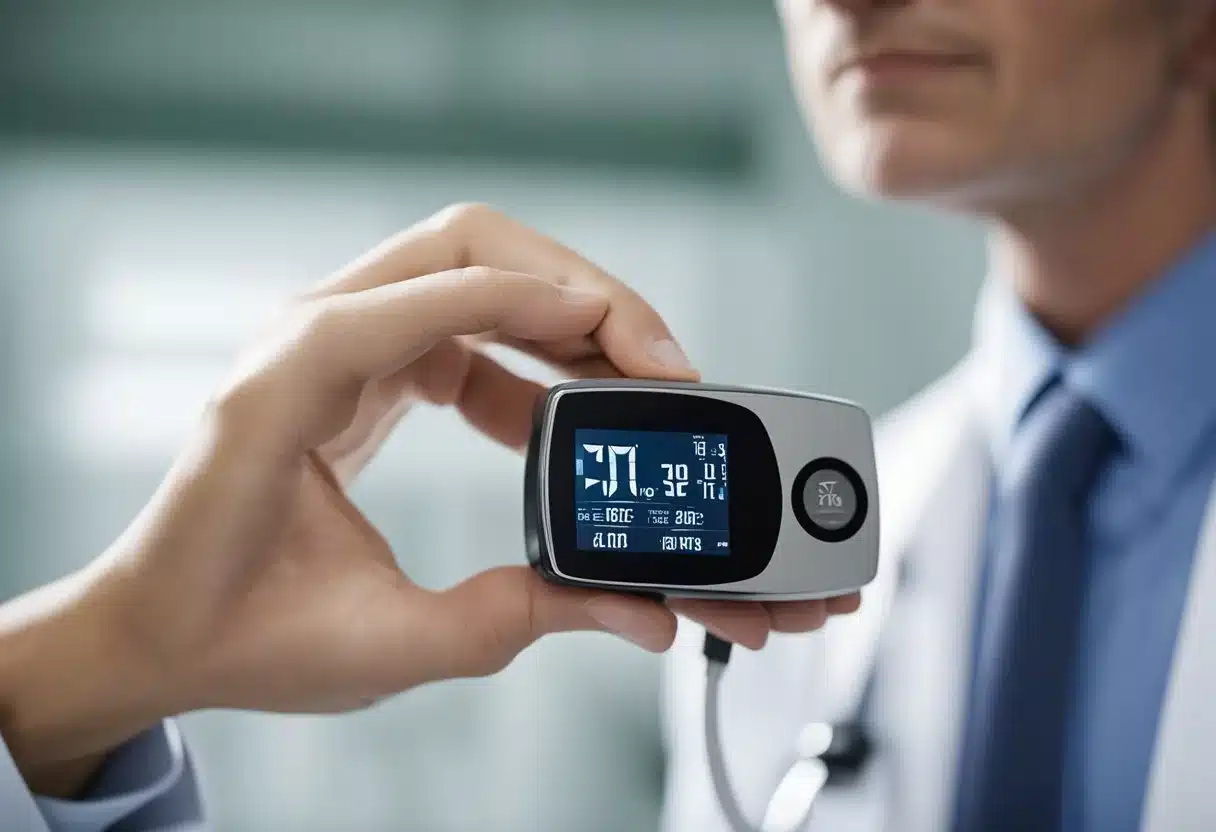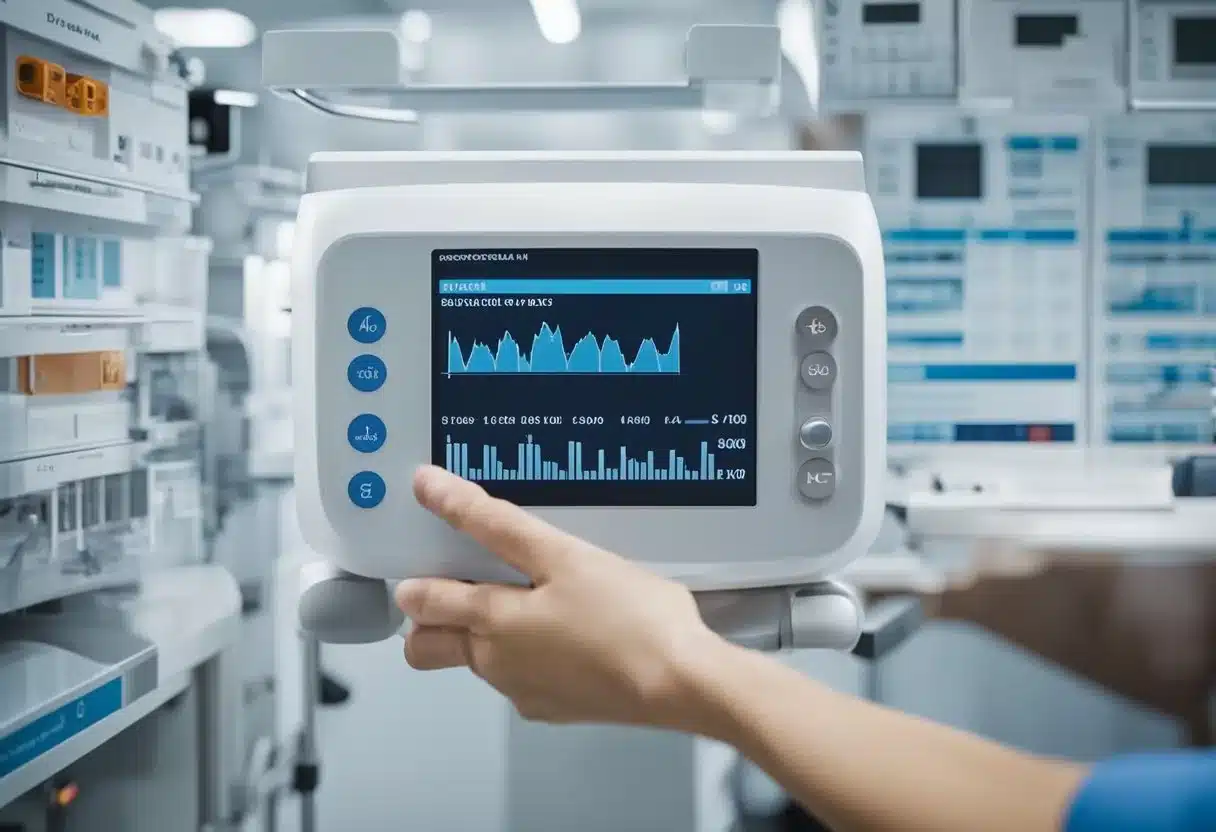A1C is a key measure of blood sugar control over time. When A1C levels climb too high, it signals poor glucose management and increased health risks. High A1C levels can lead to serious complications like heart disease, kidney problems, and nerve damage.

【Sugar Defender™】Buy Now $69 | SugarDefender Official Site
Buy Now Sugar Defender — Sugar Defender 100% Natural Formula. 60 Day Guarantee. Free Shipping. Only $49 per Bottle. Blood Sugar Defender Order 6 Bottles or 3 Bottles and Get 2 Free Bonuses.
Regular A1C testing helps catch issues early. A normal A1C is below 5.7%, while 5.7% to 6.4% indicates prediabetes. Diabetes is diagnosed at 6.5% or higher. If test results show elevated A1C, prompt action is key to prevent further health problems.
Lifestyle changes can help lower A1C levels. These include eating a balanced diet, exercising regularly, managing stress, and taking any prescribed medications. Working closely with a healthcare provider is essential for creating an effective plan to bring A1C back to a healthy range.
Key Takeaways
- High A1C levels indicate poor blood sugar control and increase health risks.
- Regular A1C testing helps detect problems early and guide treatment.
- Lifestyle changes and medical care can effectively lower A1C levels.
Understanding A1c and Its Importance

A1c is an essential measure of blood sugar control. It gives a picture of average glucose levels over the past few months. This test helps diagnose and manage diabetes.
What Is A1c?
A1c, also called hemoglobin A1c, is a blood test. It shows the amount of glycated hemoglobin in the blood. Glycated hemoglobin forms when glucose attaches to hemoglobin in red blood cells.
The test measures the percentage of hemoglobin with attached glucose. This percentage reflects average blood sugar levels over the past 2-3 months. Doctors use A1c to diagnose diabetes and check how well it’s being managed.
A1c is different from daily blood sugar tests. It gives a longer-term view of blood sugar control. This makes it a valuable tool for assessing diabetes risk and treatment effectiveness.
How A1c Reflects Blood Sugar Control
A1c provides a snapshot of blood sugar control over time. Higher A1c levels mean higher average blood sugar levels. This indicates poorer blood sugar control.
The test shows the percentage of hemoglobin with glucose attached. For example, an A1c of 6% means 6% of hemoglobin is glycated. This corresponds to an average blood sugar level of about 126 mg/dL.
A1c has some advantages over daily glucose tests:
- It doesn’t fluctuate day-to-day
- It’s not affected by recent meals
- It gives a broader picture of blood sugar control
Doctors often use A1c along with daily glucose monitoring. This combo provides a complete view of blood sugar management.
Normal vs. High A1c Levels
Normal A1c levels are below 5.7%. Levels between 5.7% and 6.4% indicate prediabetes. A1c of 6.5% or higher suggests diabetes.
Here’s a breakdown of A1c levels:
- Below 5.7%: Normal
- 5.7% to 6.4%: Prediabetes
- 6.5% or above: Diabetes
Higher A1c levels are an indicator of the risk of diabetes complications. These can include heart disease, kidney problems, and nerve damage. High blood pressure often occurs with high A1c.
Lowering A1c can reduce these risks. Diet, exercise, and medication can help bring A1c down. Regular A1c tests help track progress in managing blood sugar levels.
Consequences of Elevated A1c
High A1c levels can lead to serious health problems. The risks increase as A1c levels rise, affecting multiple body systems and organs over time.
Short-Term Effects on Health
Elevated A1c can cause immediate health issues. People may feel tired and thirsty often. They might also need to urinate more than usual.
Vision can become blurry. Cuts and wounds may heal slowly. Skin infections happen more easily.
High blood sugar can make people feel cranky or have mood swings. It may cause headaches too. In severe cases, it can lead to diabetic ketoacidosis, a dangerous condition needing urgent care.
Long-Term Risks and Complications
Over time, high A1c levels can cause major health problems. The risk of heart disease and stroke goes up. Blood vessels get damaged, leading to poor circulation.
Kidney disease is another serious risk. High blood sugar harms the kidneys’ tiny filters. This can lead to kidney failure if not treated.
Nerve damage, or neuropathy, is common. It causes pain, tingling, or numbness in hands and feet. It can also affect digestion and other body functions.
Eye problems are a big concern. High A1c can lead to blindness if left unchecked. Cataracts and glaucoma are more likely too.
Specific Organ and System Impacts
High A1c affects many parts of the body. The heart works harder, increasing the risk of heart attacks. Blood vessels become stiff and narrow.
In the brain, it raises the chance of stroke and memory problems. The liver may store more fat, leading to fatty liver disease.
Skin issues are common. Wounds heal slowly and infections occur more often. Gum disease happens more in people with high A1c.
For men, it can cause erectile dysfunction. Women may have irregular periods. Both may face fertility issues.
Bones and joints can be affected too. People with high A1c often have a higher risk of fractures and joint problems.
Risk Factors and Causes of High A1c

High A1c levels can stem from various factors. These include lifestyle choices, genetic tendencies, and certain health conditions. Understanding these causes is key to managing blood sugar levels.
Lifestyle and Diet
Poor diet and lack of exercise are major contributors to high A1c. Eating too many sugary or high-carb foods can spike blood glucose. Not being active enough means the body doesn’t use glucose efficiently.
Stress also plays a role. It can lead to unhealthy eating habits and hormone changes that affect blood sugar.
Smoking is another risk factor. It can make cells less responsive to insulin, leading to higher blood sugar levels.
Sleep patterns matter too. Not getting enough sleep or having poor sleep quality can disrupt blood sugar control.
Genetic Predisposition
Some people are more likely to develop high A1c due to their genes. Family history of diabetes is a strong risk factor.
Certain ethnic groups have higher rates of diabetes. These include African Americans, Hispanic Americans, and Native Americans.
Age is also a factor. The risk of type 2 diabetes increases after age 45.
Some genetic conditions can affect insulin production or use. This can lead to chronically high blood sugar levels.
Other Contributing Conditions
Several health conditions can raise A1c levels. Obesity is a major risk factor for type 2 diabetes and high A1c.
Prediabetes often leads to higher A1c. It’s a warning sign that diabetes may develop if no changes are made.
Hormonal disorders like polycystic ovary syndrome (PCOS) can affect insulin sensitivity.
Certain medications, such as steroids, can raise blood sugar levels.
Chronic stress or depression may also contribute to higher A1c levels over time.
Diagnosing High A1c Levels

The A1c test is a key tool for diagnosing and monitoring diabetes. It measures average blood sugar levels over the past 3 months. Doctors use specific criteria to interpret results and determine if levels are too high.
Types of A1c Tests
There are two main types of A1c tests:
- Lab tests: These are done at a medical facility or lab. They’re highly accurate and often used for official diagnosis.
- At-home tests: These kits let people check their A1c levels at home. They’re convenient but may be less precise than lab tests.
Both types measure the amount of glycated hemoglobin in the blood. This shows how much sugar has attached to red blood cells over time.
Understanding Test Results
A1c results are given as a percentage. Here’s what the numbers mean:
- Below 5.7%: Normal
- 5.7% to 6.4%: Prediabetes
- 6.5% or higher: Diabetes
A result of 6.5% or higher on two separate tests indicates diabetes. For people with diabetes, doctors often set a target A1c of less than 7%.
Higher A1c levels mean higher average blood sugar. This can lead to more health problems over time.
When to Seek Medical Advice
It’s important to see a doctor if:
- Your A1c is 5.7% or higher
- You have symptoms of high blood sugar
- You’re at high risk for diabetes
Symptoms of high blood sugar can include:
- Frequent urination
- Excessive thirst
- Blurry vision
- Fatigue
Don’t wait for symptoms to appear. Regular A1c tests can catch problems early. This allows for quicker treatment and better health outcomes.
Managing and Lowering High A1c

High A1c levels can be lowered through medical treatments, lifestyle changes, and careful monitoring. A combination of these approaches often works best to bring A1c into a healthy range.
Medical Interventions and Medication
Doctors may prescribe medications to help lower A1c levels. Common options include metformin, sulfonylureas, and insulin. The specific treatment plan depends on the individual’s health status and A1c level.
Metformin is often the first-line medication. It works by reducing glucose production in the liver.
Sulfonylureas stimulate the pancreas to release more insulin. This helps lower blood sugar levels.
For some patients, insulin injections may be necessary. Insulin helps cells absorb glucose from the bloodstream.
Doctors may adjust medication dosages over time based on A1c results and patient response.
Lifestyle Modifications
Making changes to daily habits can significantly impact A1c levels. Key areas to focus on include diet, exercise, and weight management.
A healthy diet is crucial for blood sugar control. This typically involves:
- Limiting simple carbohydrates and added sugars
- Eating more fiber-rich foods
- Controlling portion sizes
Regular physical exercise helps lower blood sugar by increasing insulin sensitivity. Aim for at least 150 minutes of moderate activity per week.
Weight loss, if needed, can improve insulin function. Even a 5-10% reduction in body weight can have positive effects on A1c.
Stress management techniques like meditation or yoga may also help, as stress can affect blood sugar levels.
Monitoring and Adjusting Treatment
Regular blood sugar monitoring is essential for managing A1c levels. This helps identify patterns and adjust treatment as needed.
Patients should check their blood sugar levels as recommended by their healthcare provider. This may be several times a day or less frequently.
A1c tests are typically done every 3-6 months. These results show average blood sugar levels over time.
Based on these results, doctors may adjust medications or suggest lifestyle changes. The goal is to keep A1c below 7% for most adults with diabetes.
Continuous glucose monitors can provide real-time data on blood sugar levels. This technology helps patients make informed decisions about food, exercise, and medication.
Prevention Strategies for Healthy A1c Levels

Keeping A1c levels in check involves lifestyle changes. Key areas to focus on are food choices, exercise habits, and regular check-ups.
Dietary Choices
A healthy diet plays a big role in managing A1c levels. Eating foods low in sugar and refined carbs can help control blood glucose.
Some good options include:
- Whole grains
- Lean proteins
- Fresh fruits and vegetables
- Healthy fats like avocado and nuts
It’s smart to limit sugary drinks, processed snacks, and white bread. Portion control also matters. Smaller meals spread throughout the day can keep blood sugar more stable.
A dietitian can create a meal plan tailored to individual needs. This plan will balance nutrients and help maintain steady blood glucose levels.
Regular Physical Activity
Exercise is a powerful tool for lowering A1c. It helps the body use insulin better and lowers blood sugar.
Aim for at least 150 minutes of moderate activity each week. This could include:
- Brisk walking
- Swimming
- Cycling
- Dancing
Strength training is also helpful. It builds muscle, which uses more glucose than fat does.
Start slow and build up over time. Even short bursts of activity can make a difference. Taking a quick walk after meals can help control post-meal blood sugar spikes.
Routine Health Screenings
Regular check-ups are key for monitoring A1c levels. Most people should get A1c tests at least twice a year. Those with well-controlled levels might need fewer tests.
During these visits, doctors can:
- Check A1c levels
- Adjust medications if needed
- Screen for diabetes complications
It’s important to track other health markers too. These include blood pressure, cholesterol, and kidney function.
Keeping all health appointments helps catch problems early. This makes them easier to treat and manage.
Understanding A1c Targets
A1c targets help guide diabetes management. These goals vary based on individual factors and may change over time. Proper target setting is key for effective blood sugar control.
Setting Individualized Goals
A1c goals should be tailored to each person. Factors like age, other health issues, and risk of low blood sugar play a role. For most adults with diabetes, the American Diabetes Association suggests an A1c target below 7%.
Some people may need higher or lower targets. Those at risk for low blood sugar might aim for 7-8%. Younger, healthier people could set stricter goals. A doctor can help choose the right target.
It’s important to balance tight control with safety. Too-low A1c can lead to dangerous drops in blood sugar.
A1c Targets for Different Populations
A1c targets differ for various groups:
- Adults with diabetes: Usually 7% or less
- Older adults: Often 7.5-8.5%, depending on health
- Children: Generally 7.5% or less
- Pregnant women: Below 6-6.5%
People with heart disease may need different goals. Those with a history of severe low blood sugar might have higher targets.
Targets also depend on how long someone has had diabetes. Newly diagnosed patients may aim for tighter control.
Adjusting Goals Over Time
A1c targets aren’t set in stone. They may change as a person’s health or life situation shifts. Regular check-ups help determine if goals need adjusting.
As people age, their A1c target might rise. This reduces the risk of low blood sugar in older adults. During pregnancy, targets often become stricter to protect the baby’s health.
Changes in medication, diet, or exercise can affect A1c. This might lead to new goals. If someone develops new health problems, their target may change.
It’s crucial to review A1c targets at least once a year. This ensures the goals still fit the person’s needs and health status.
Emerging Technologies and Tools
New devices and methods are improving diabetes management. These tools help people track blood sugar levels more easily and get more accurate A1C results.
Continuous Glucose Monitoring
Continuous glucose monitors (CGMs) are small devices worn on the body. They check blood sugar levels every few minutes, day and night.
CGMs use tiny sensors under the skin to measure glucose. The data is sent to a device or smartphone app.
This constant tracking helps people see how food, exercise, and medicine affect their blood sugar. It can alert users if levels get too high or low.
CGMs give a fuller picture than finger-stick tests. This helps doctors adjust treatment plans faster.
Advancements in A1C Testing
A1C tests now offer quicker and more precise results. Some new methods need less blood and give answers in minutes.
At-home A1C test kits let people check their levels without going to a lab. These kits are becoming more accurate and easy to use.
A newer measure called estimated average glucose (eAG) translates A1C into daily blood sugar numbers. This helps people better understand their results.
Improved tracking technologies link A1C data with daily glucose readings. This gives a clearer view of long-term blood sugar control.
Support and Resources

Getting help with high A1C levels is crucial. Both professional guidance and community support play important roles in managing diabetes effectively.
Accessing Professional Guidance
Healthcare providers are key in managing high A1C levels. They can offer personalized advice and treatment plans.
Doctors may adjust medications or suggest lifestyle changes. Regular check-ups help track progress and catch issues early.
Diabetes educators are experts in teaching self-care skills. They can help with meal planning, blood sugar testing, and medication management.
Nutritionists can create eating plans that help control blood sugar. They teach about carb counting and portion sizes.
Leveraging Community and Online Support
Community support is valuable for people with high A1C. Local diabetes support groups offer a chance to share experiences and tips.
Online forums and social media groups connect people with diabetes worldwide. These platforms allow for 24/7 support and advice sharing.
Diabetes organizations offer reliable online resources. They provide educational materials, webinars, and tools for blood sugar tracking.
Mobile apps can help with diabetes management. Some track blood sugar, food intake, and exercise, while others offer reminders for medication.
Frequently Asked Questions
High A1C levels can lead to serious health complications. Understanding the risks, symptoms, and when to seek medical help is crucial for managing diabetes effectively.
What are the risks associated with an A1C level over 10?
An A1C level over 10% indicates poor blood sugar control. This can damage blood vessels and nerves over time. It raises the risk of heart disease, kidney problems, and vision issues.
Long-term complications may include diabetic neuropathy and slow wound healing. Consistently high A1C levels also increase the chance of stroke and circulation problems.
What are the immediate health concerns of a dangerously high A1C level?
A dangerously high A1C level can lead to acute complications. These include diabetic ketoacidosis, a life-threatening condition. Severe dehydration is another concern.
High blood sugar can cause confusion and altered mental status. It may also lead to electrolyte imbalances that affect heart function.
How might symptoms manifest when A1C levels are excessively elevated?
Excessively high A1C levels often cause increased thirst and frequent urination. Fatigue and blurred vision are common symptoms.
Unexplained weight loss may occur despite increased appetite. Slow-healing wounds and recurrent infections can also indicate very high blood sugar levels.
What constitutes a high-risk A1C range for individuals with type 2 diabetes?
For people with type 2 diabetes, an A1C above 7% is generally considered high-risk. Levels above 9% indicate very poor blood sugar control.
The exact high-risk range may vary based on individual factors. Age, overall health, and diabetes duration all play a role in determining target A1C levels.
Can an A1C level be so high that it requires emergency medical attention?
Yes, extremely high A1C levels can require emergency care. This is especially true if accompanied by severe symptoms or complications.
A1C levels above 13-14% often indicate a medical emergency. Immediate treatment is crucial to prevent life-threatening conditions like diabetic ketoacidosis.
What are common indicators of hyperglycemia in diabetics?
Common signs of high blood sugar include extreme thirst and dry mouth. Frequent urination, especially at night, is another key indicator.
Blurry vision and headaches may occur. Some people experience fatigue or irritability. Slow-healing cuts or sores can also signal hyperglycemia in diabetics.
